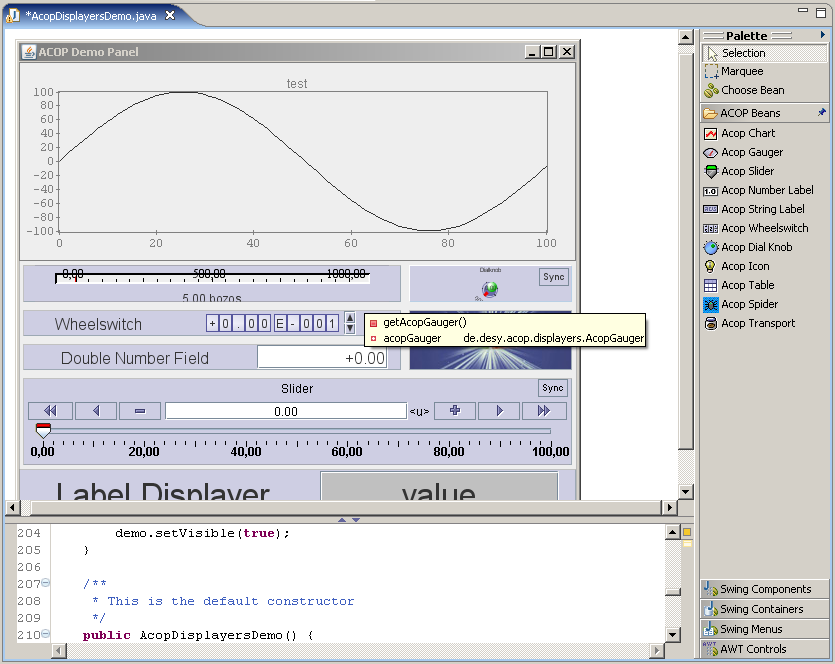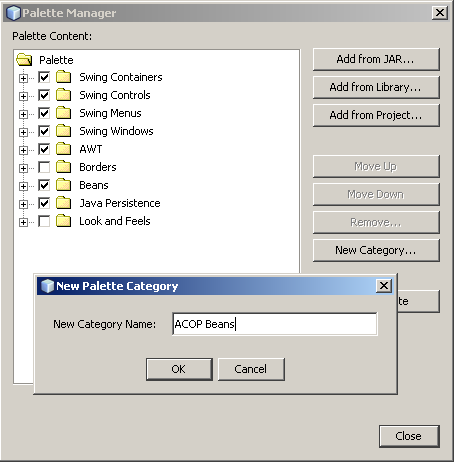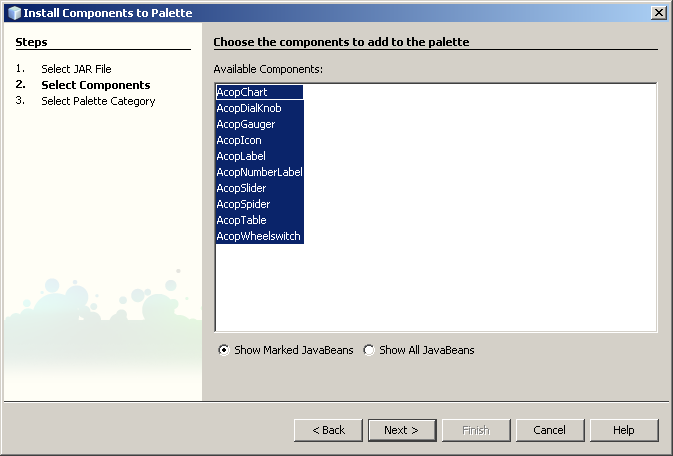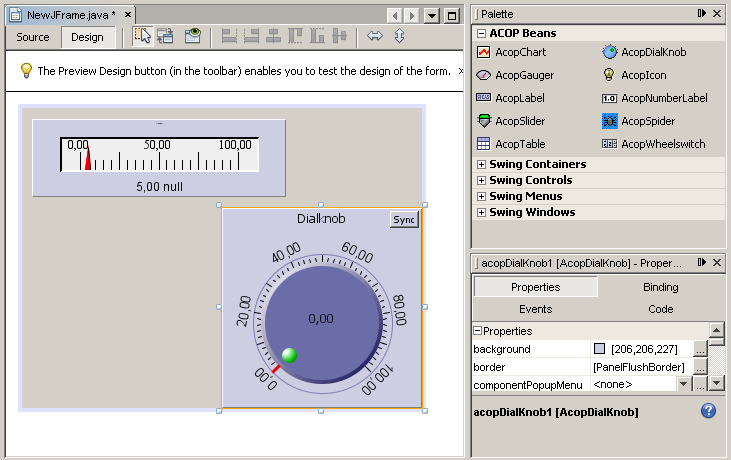
All ACOPBeans (except ACOPVideo) are provided within a single java library file acopbeans.jar. To use the beans one does not need to install any specific features. ACOPVideo is provided withing the videobean.jar and in order to use it one also has to provide acopbeans.jar to the same classpath where ACOPVideo is being used.
When creating an application with the beans the acopbeans.jar has to be added to the classpath of the project, which the application is a part of.
If the beans are used to connect to remote TINE properties, one also has include the tine.jar in the classpath.
All ACOP Beans follow the java beans conventions. Therefore, they can be used by any standard java GUI builder, where user can simply select a bean and drag and place it inside another container.
ACOP Beans can only be used in combination with javax.swing containers.
If using Eclipse Visual Editor for graphical GUI building, one can use the beans palette to browse through the beans. For simple access to the ACOP Beans a VE ACOP Beans Palette Plugin has to be installed.
When constructing a new Visual Class in the Eclipse project the ACOP Beans palette should be visible.

NetBeans GUI builder does not require any additional software to enable the ACOP Beans palette. However, the palette has to be configured manually.
Create new ACOP Beans category

Select all Available Components

When constructing a new JPanel Form or JFrame Form in the NetBeans project, the ACOP Beans palette should be visible.
